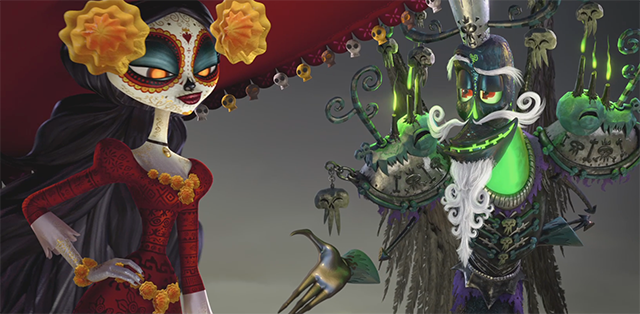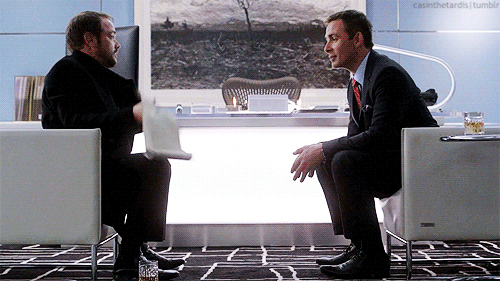By all accounts, The Book of Life is going to be something special. Whether it proves to be a good movie or a mediocre one (my money’s on the former), it already stands out for its representation of Mexican culture, distinct art direction, and stop motion-esque CGI animation. Perhaps what is most striking about The Book of Life, though, is its direct approach to death. The protagonist, Manolo, is killed and spends much of the movie in the afterlife. That is, let’s face it, an unusual premise for a movie marketed to children.
Of course, The Book of Life is hardly the first children’s film to deal with death. As countless Top 10 Saddest Animated Deaths lists online will remind you, themes of grief, loss, and mortality are no stranger to children’s entertainment. This begs the question… why? Plenty of adults consider the subject matter too mature, depressing, and morbid for children, and, while I disagree, their concern still warrants a response:
Why do so many shows and movies for children deal with death… and why is it important that they do so?
First of all, there are a number of reasons why killing off characters in children’s media makes sense from a writing standpoint.
Establishing mortal stakes gives the story a greater emotional impact (how powerful was ParaNorman’s reveal that Agatha Prenderghast was wrongfully executed?), and death can serve as the catalyst that sets the plot in motion (what, pray tell, would The Lion King have been about if Mufasa hadn’t died?). It can also aid character development, particularly if the protagonist is a child. Simba, Littlefoot, Bambi, Elsa, Anna, and Sequel!Hiccup’s character arcs all depend on the loss of parents. In other words, death is a powerful storytelling tool, and children’s media can benefit from it as much as any other.
“That’s all very well,” says Straw Man, “but that still doesn’t touch on why death is a worthwhile subject to bring up in children’s entertainment.” As mentioned above, many grown ups worry that it’s too depressing and morbid a topic for little ones, but I argue the contrary. It’s important to address mortality in media aimed at children because, well … *spoiler alert* everybody dies.
Sooner or later, one way or another, children learn that life doesn’t last forever, and parents, filmmakers, and censor boards don’t do them any favors by shielding them from all unpleasant truths. Difficult topics need to be dealt with in an age-appropriate manner, but they still need to be dealt with. Shows and movies that address mortality can gently introduce children to these scary realties and offer catharsis to those who have already faced them.
Sesame Street and Mister Rogers’ Neighborhood both famously dedicated segments to explaining death directly to their young viewers in response to the passing of Will Lee (aka Mr. Hooper) and to the assassination of Robert Kennedy, respectively.
Similarly, The Land Before Time, while obviously more narratively driven than Sesame Street or Mister Rogers, slows down after the death of Littlefoot’s mother to take stock of what’s happened and offer a comforting perspective on loss via Rooter. “It is nobody’s fault,” Rooter tells Littlefoot (and the bereaved audience). “The great circle of life has begun but, you see, not all of us arrive together at the end… You’ll always miss [your mother], but she’ll always be with you as long as you remember the things she taught you. In a way you’ll never be apart, for you are still a part of each other.” Wise words, Rooter. *Blows nose* Wise words.
There’s also something very special about stories that make you view the world differently. On a less tear-inducing note, presenting children with a challenging subject like death can be beneficial in that it gets them thinking. Mortality, the possibility of an afterlife, the fleetingness of life, the power of love (don’t roll your eyes, I’m serious)… these aren’t topics most children would contemplate on their own, but they’re still worth thinking about—perhaps especially so for children whose world views are still forming.
Speaking from personal experience, I remember being confused that in Hocus Pocus the Sanderson sisters chose to punish Thackery Binx with eternal life. I was puzzled that his death was framed as both sad and happy. The first time I saw Casper, I was struck by Kat’s question “What’s it like to die?,” as it was something I’d never considered before. I’m also fairly certain that the revelation that Casper passed away when he was twelve was the moment I realized that children could die. I’m sure many a well-intentioned adult questioned the wisdom of including such heavy material in those films, yet it was moments like those that made them so memorable to me. I owe those movies some of my earliest philosophical ponderings.
At the same time, of course, we all had movie-death experiences as children that did straight up traumatize us. I had one. You had one. A little boy who saw How to Train Your Dragon 2 now has one. Not all children can handle on-screen tragedy equally, which is why shows and movies that depict or refer to an afterlife deserve special attention, not for purporting a spiritual world view but for framing death in a way that isn’t quite so terrifying… which brings us back to The Book of Life.
If nothing else (and I do expect quite a lot from this movie), The Book of Life will be memorable for not just addressing death, but for normalizing it, for showing young viewers that thinking and talking about death doesn’t have to be depressing or morbid. By featuring a dead protagonist and setting part of the movie in the eternally festive “Land of the Remembered,” The Book of Life is addressing the reality of death (and the fact that people can die young) but is doing so in the joyous, cathartic and healthy spirit of Dia de Los Muertos: death is just another part of life, neither inherently good nor bad, just… La Muerte.
And that’s not a bad lesson for kids to learn.
Petra Halbur is an undergraduate at Hofstra University pursuing a BA in journalism and presently trapped in the world-building phase of writing her science-fantasy novel. You can read more from her at Ponderings of a Cinephile or follow her on Twitter.
Are you following The Mary Sue on Twitter, Facebook, Tumblr, Pinterest, & Google +?









